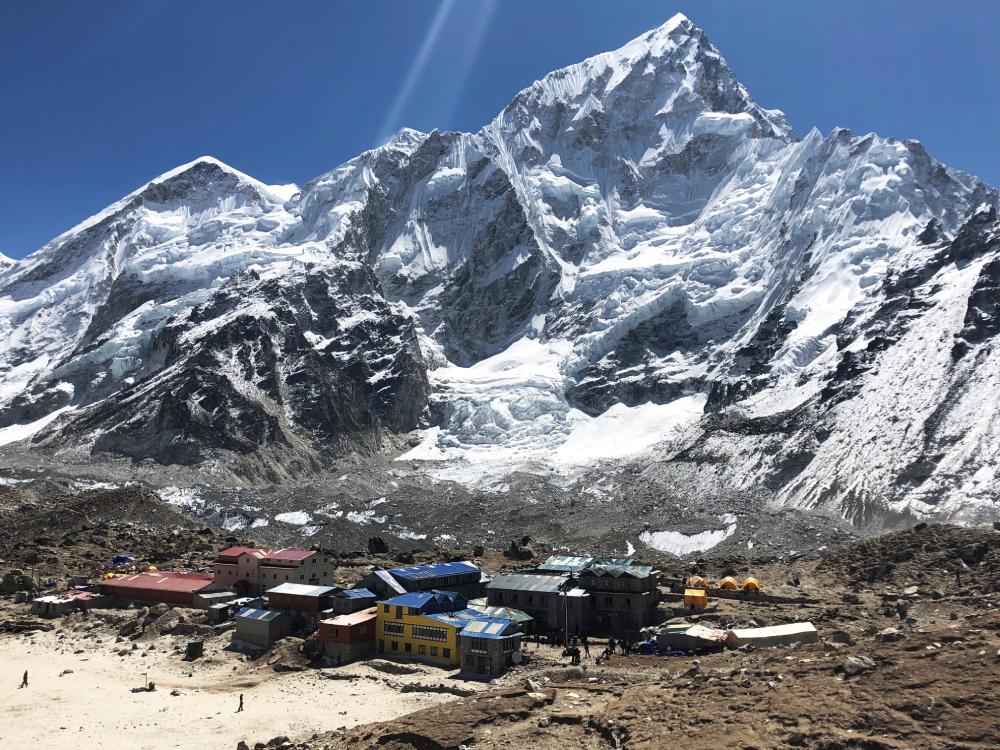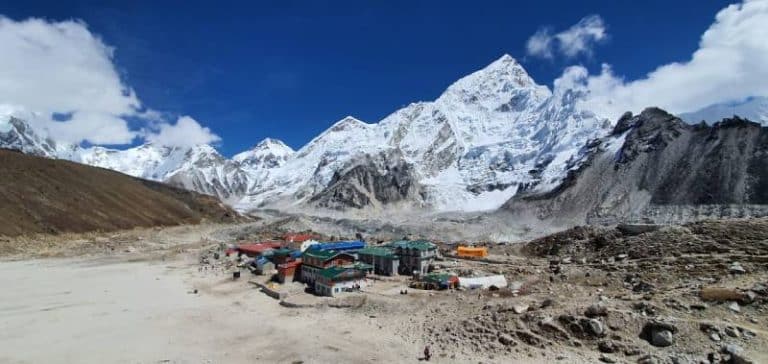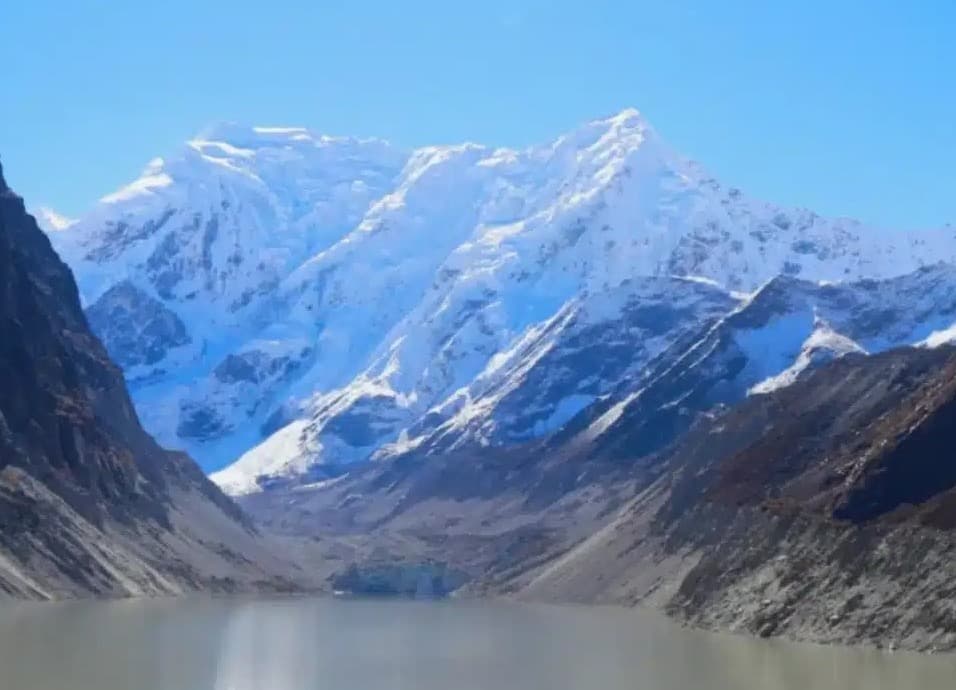Gorakshep village is a small temporary settlement of guest houses near the Everest Base Camp in Nepal. At a height of 5,164 m (16,942 ft), it is the last stop for lodges on Everest’s trekking route.
The term Gorakshep came from a local sherpa term “Gorak” and “Shep” means dead Raven. Gorak means the Raven, a local bird, and Shep means dead. So, Gorak Shep is also called dead Ravens. Although frozen, birds are noticeable here. Some common names are Snowcocks and Choughs, Horned Lark, Bar-Headed Goose, Robin Accentor, Alpine Accentor, Great Rosefinch, etc.

Gorakshep, The last stop for Everest Trekking,
Gorakshep village lies inside the Sagarmatha National Park and is a hub for Sherpa guides, porters, and those involved in the tourism business. It is the last stop for accommodation on the Everest route. There are no accommodation options above the place except camping in a tent. Thus, trekkers coming from Lobuche leave all their belongings in the guesthouses of Gorakshep and hike to EBC. And, coming back, they spent the night there. The next morning, trekkers leave for Kala Patthar to see the sunrise over Mt. Everest and return for breakfast. As it is always freezing out there, most travelers descend on Pheriche on the same day.
Until the late 50s of the nineteenth century, Gorakshep was the original Everest Base Camp. But later, the point was taken higher, close to the mountain, which is today’s Everest Base Camp.
The distance from Gorakshep to base camp is around 3.3 KM. And it takes travelers 1.5–2 hours to reach the base camp. However, the time depends upon the weather, climate, and conditions of the trails too.
Climate and the best time to visit Gorakshep
The temperature at Gorakshep is always near freezing, whether it be summer, winter, autumn, or spring. Winter is extremely cold and snow fully covers the trails. Autumn and spring are far better than winter, as it’s not overly cold. Also, these seasons provide clear views of the mountains. Therefore, the best times to visit Gorakshep are spring (March-May) and autumn (September-November).
These are the peak seasons for the Everest Base Camp trek. The rooms are almost full. The fight for bed space is intense. So, trekkers sometimes have to sleep on the floors.
Hotels, lodges, and guesthouses
Nepal’s highest mountain settlement only has a few lodges and guesthouses. Although there are well-built houses, the settlement is temporary. During off-seasons, the village remains empty as it’s freezing out there. People come down to lower altitudes to escape the cold.
The lodges and guesthouses in Gorakshep are mostly basic. However, you can find every facility, from good accommodation, food, and high-speed internet facilities.
Some of the best lodges are:
- Everest Inn Hotel
- Snow Land’s Highest Inn
- Himalayan Lodge
- Buddha Lodge

Mountain Scenes
The final destination of lodges in Everest is above the treeline. So, all you can see are mountains, rocks, and bare hills around you. Some popular mountain peaks seen from Gorakshep are.
- Nuptse (7,861 m)
- Changtse (7,543 m)
- Pumori (7,138 m)
- Mount Everest, 8848.86 m.
- Lhotse (8,516 m)
- Lingtren (6,749 m)
- Khumbutse (6,665 m)
FAQ
How do I get to Gorakshep?
One can either fly with a helicopter from Kathmandu or Namche Bazaar or else follow the EBC trek itinerary from Lukla to Namche, Tengboche, Pangboche, Dingboche, Lobuche, and finally to Gorakshep.
Is there any vegetation in Gorakshep?
No, you won’t find any trees or other kinds of vegetation in Gorakshep. The area is full of sand and surrounded by mountains. But, we can witness a few birds and animals.
Can we find luxury hotels in Gorakshep?
No, there are no luxury hotels there. The only accommodation option is the basic lodges. But some provide modern facilities.











